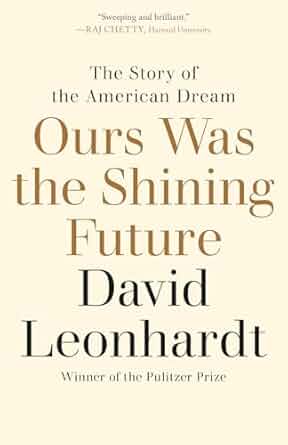Ours Was the Shining Future

Ours Was the Shining Future covers the rise of the New Deal coalition and system that created the largest middle class in history and fall to the neoliberal order that has destroyed it. Leonhardt attributes the triumph of the New Deal order to the success of labor in the 1930s and 1940s. Not only had they learned lessons from the fights of previous decades, the timing was right—the Great Depression weakened business’s faith in unrestricted capitalism while World War II increased the leverage labor had to strike and negotiate deals. Crucially, they had political support from a friendly Roosevelt administration which passed the National Labor Relations Act of 1935 that legalized the right to strike and intervened on behalf of labor in disputes between owners and workers.
The downfall of the New Deal order, then, starts with the emergence of the New Left that was more preoccupied with cultural issues relevant to college graduates than working class issues like crime and disorder. Because of the New Left, Democrats failed to prioritize legislation and execution action that would strengthen the labor movement. The labor movement itself had become corrupt and decadent through the middle of the 20th century, helmed by ineffective leaders unconcerned with expanding unions. At the same time, economists at elite institutions were developing an alternative theory to Keynesian economics that would then become prominent during the stagflation of the 1970s. Executives and economists worked together to push a model of laissez faire capitalism that would increase their profits by dismantling government regulation. Unrestricted immigration helped suppress the wages of the most vulnerable Americans.
For Leonhardt and many progressives, the solution to the current problems is a return to the New Deal. While good parts of the New Deal were certainly abandoned, I wonder if progressivism’s inability to think of novel solutions is a creative failure akin to the Rise of Skywalker’s resurrection of Palapatine as the big bad. The circumstances of the 21st century are much different than the 20th century. The days of thousands of workers together on the same factory floor are over. Factories now are more efficient and more automated. The average worker now works in a service sector jobsite like a restaurant or grocery store. New technologies like AI threaten to displace high income white collar workers that were previously safe. The solutions for the 21st century must be different than those for the 20th century.